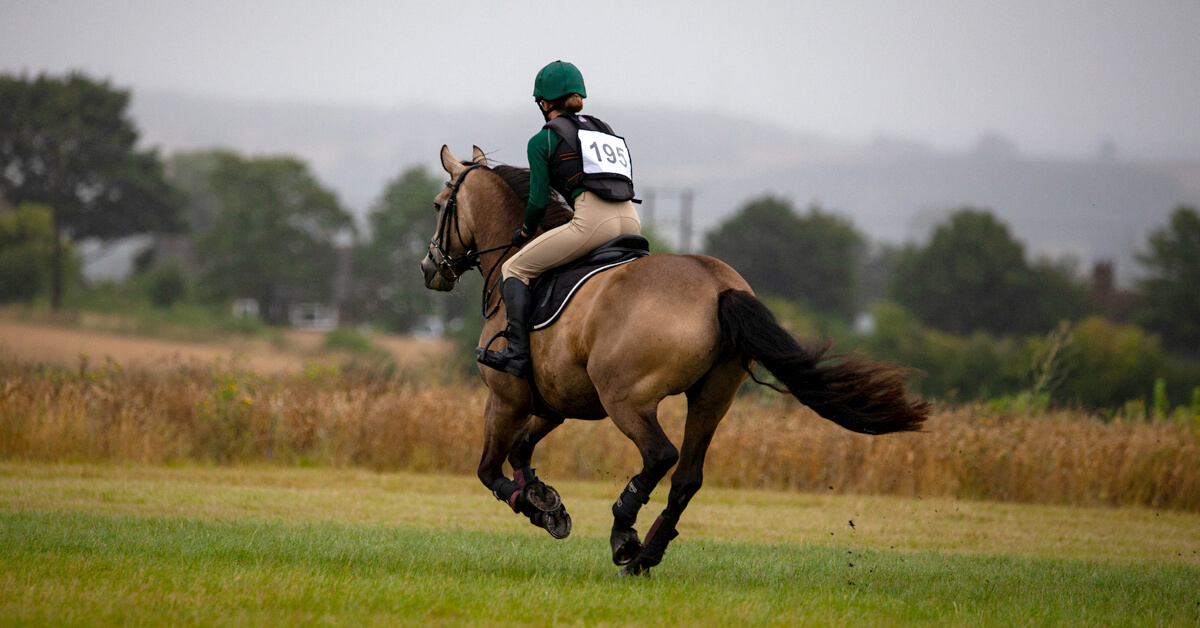As riders, we spend a lot of time in the saddle. Sometimes it’s easy to focus on training our horses and let our own fitness and strength lapse.
To maintain the safest seat on a horse, we need a combination of strength, mobility and endurance. The strength is easily understandable: we require strength to stay on and to drive an engine on four legs. Endurance is necessary to sustain that strength so that we don’t fail in our position as we fatigue. Mobility, especially in our ankles and thoracic spine, is imperative to have the ability to fire our core stability and achieve a safe and effective seat.
Here are some good ‘bang for your buck’ exercises to help maintain and improve these facets so we stay safe and effective. Some of these overlap in strength, mobility and endurance. These systems work together to support each other, so it makes sense to train them reciprocally. Plus, you can do them at home if the gym is closed!
1. Seated Overhead Wall Slides
This is to mobilize through the thoracic spine (mid-back) and to simultaneously work on core, latissimus and tricep activation. Holding a light bar (PVC pipe, broom handle, etc) wider than shoulder width, sit on the floor with back and glutes as close to the wall as possible, legs out front. With straight arms, bring the bar overhead, keeping forearms flat against the wall. Tuck your front ribs, slide shoulder blades down your back and bend your elbows level with your head, then push back up, maintaining core stability and forearms on the wall. Do 3 sets of 10 reps.
2. Ankle Mobility
Ankle mobility is imperative to keep our seat grounded and secure. If our ankle mobility is poor, that creates a much more vulnerable seat. Conversely, our heels may come up if we can’t maintain our core stability. An inability to dorsiflex your ankle can be caused by a true joint stiffness or muscle tissue stiffness.
The knee-to-wall matrix can improve ankle joint mobility in three dimensions. With a bent knee, push your heel into the ground and pulse your knee towards the wall. Then complete big knee circles, feeling movement through your ankle. Do 3 sets of 5 pulses in each direction
3. Shoulder Taps
This works on core stability in all three planes. The first part of progression is maintaining a “high plank” position on hands and toes, with a straight torso. This means tightening your core, bringing your shoulder blades down your back, and squeezing your glutes and quads to create a strong plank. To progress, narrow feet until they touch. Start with 5 30-second holds. The next challenge is to maintain this position while lifting one hand to tap the opposite shoulder, with little to no movement or shifting through the pelvis. Start with feet wide and gradually narrow them to challenge your core stability.
Tip: pay attention to how your body wants to rotate when lifting a hand, and try to anticipate that and counteract that movement. Don’t sacrifice narrow stance for quality of stability.
4. Burpees
HIIT, or High-Intensity-Interval-Training is great bang-for-your-buck. It involves shorter, intense training bursts punctuated by small, active rest periods. In the equestrian world, it mimics those short, high-intensity bursts of energy that we need for competition.
HIIT training produces significant training effects in a short period of time. Burpees are a great exercise that combines a lot of the muscles we talked about above, and adds the endurance challenge. To complete a burpee, start in a standing position. Quickly drop your hands to the floor and kick your legs out into a plank. From that position, lower into a strong pushup touching your chest to the floor. As you push back up, snap your legs underneath you and once your feet hit the ground, jump up and clap arms overhead. This takes some practice and some people might need to scale with ‘no-jump’ burpees, or ‘mountain climbers’ where you kick your feet out behind you and plank, but don’t do the full pushup portion. Start with 5-10 in succession and repeat 3-4 times. This works on core, lats, legs and glutes as well as endurance.
This whole program can be achieved in 20 minutes or so, a few times a week. It also encourages balance in our bodies so we can more effectively achieve the same for our horses and protect ourselves as best as we can from injury.





